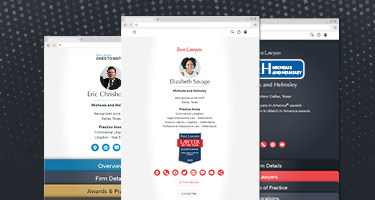ERISA litigation is entering a transformative era. With court rulings and regulatory changes in 2024 redefining how employee benefits laws are interpreted and enforced, companies are taking note and reshaping how they conduct business.
This shift isn’t just theoretical; recent rulings, like the groundbreaking decisions in Cedeno v. Sasson and Perez-Cruet v. Qualcomm, Inc. are already making waves and influencing how businesses operate.
The Second Circuit’s decision in Cedeno v. Sasson in May invalidated arbitration clauses that block fiduciary breach remedies, setting a precedent that could impact numerous plans.
Meanwhile, in Perez-Cruet v. Qualcomm, Inc., participants in Qualcomm’s 401(k) plan allege fiduciaries mismanaged the plan by improperly using forfeitures, underscoring the ongoing risks of fiduciary mismanagement.
These changes illustrate two critical trends in Employee Retirement Income Security Act litigation: the judiciary's increasing reluctance to enforce arbitration clauses that undermine ERISA protections and the heightened scrutiny on fiduciary duties and plan management.
Failure to navigate these regulatory shifts may lead to costly litigation and reputational damage.
Arbitration Clauses and ERISA Protections
For businesses, the implications of the Cedeno v. Sasson decision are profound.
On May 1, the court found that an arbitration clause in an employee retirement plan document was unenforceable. The clause precluded plan participants from seeking ERISA fiduciary breach remedies, a condition that was ruled as violating participants' statutory ERISA rights.
This decision follows a broader judicial trend where courts increasingly reject arbitration clauses that undermine the substantive protections ERISA offers to plan participants.
The court’s ruling hinged on the "effective vindication doctrine," invalidating arbitration provisions from obstructing the enforcement of statutory rights. The court ultimately determined that ERISA Section 502(a)(2) mandates plan-wide relief, which the non-severable arbitration clause improperly barred.
The Cedeno v. Sasson case began when a Strategic Financial Solutions, LLC employee and Strategic Employee Stock Ownership Plan participant accused Argent Trust Company of causing an employee stock ownership plan to overpay for company shares.
Ramon Dejesus Cedeno first sued his company’s trustee, Argent, and others in November 2020, alleging that a transaction led to significant losses for the plan and that Argent breached its fiduciary duties.
Under the Federal Arbitration Act, Argent moved to compel arbitration, emphasizing that the arbitration clause required individualized arbitration and prohibited plan-wide remedies. However, both the district court and the Second Circuit held that the provision conflicted with ERISA’s inherent plan-wide remedies.
The U.S. Department of Labor (DOL) has supported this stance, arguing in the Sixth Circuit’s 2022 Frayer et al v. Tenneco Inc. case that such arbitration clauses effectively waive participants' rights under ERISA, making them unenforceable. The DOL stressed that provisions barring plan-wide relief contradict ERISA’s core protective purposes, urging courts to deny motions for individual arbitration in ERISA class actions.
Legal counsel oversight is crucial when drafting arbitration clauses to ensure they align with jurisdictional views. This is especially important given that four Circuit Courts and the DOL oppose individualized arbitration for ERISA Section 502(a)(2) claims.
Plan sponsors should incorporate severability provisions to ensure that if one part of an arbitration clause is invalidated, the rest remains enforceable. Savings clauses can protect specific rights and remedies under ERISA.
Businesses must remain vigilant, continuously monitoring legal developments and adjusting compliance strategies accordingly. By ensuring arbitration clauses do not infringe on statutory rights and implementing comprehensive fiduciary training programs, companies can better navigate the complexities of ERISA compliance and mitigate litigation risks.
Fiduciary Mismanagement and Litigation
As a cautionary tale about the damage fiduciary mismanagement can inflict on employee benefit plans, Perez-Cruet v. Qualcomm, Inc. saw participants in Qualcomm's 401(k) plan first sue the company in October 2023, alleging fiduciaries bungled the plan by improperly using forfeitures.
Participants in the plan claimed the 401(k) funds were not used in compliance with the plan’s terms and ERISA guidelines, leading to financial losses and breaches of fiduciary duty. The funds weren’t reallocated to benefit the remaining participants.
Instead, plaintiffs alleged they were misapplied, leading to financial losses and breaches of fiduciary duty. This mismanagement directly contravenes ERISA’s requirements for the prudent, exclusive benefit of plan participants and beneficiaries.
Qualcomm asked the court to dismiss the case in January, arguing unvested employer contributions should be treated as mistaken contributions.
On May 24, the court found unvested employer contributions to be plan assets, making the employer's action of reallocating these funds sufficient to bring a prohibited transaction claim. Currently, the case is progressing with negotiations between the parties.
Fiduciary mismanagement poses significant financial and reputational risks for businesses. Legal fees, settlement cost and potential penalties from regulatory bodies can quickly accumulate, straining financial resources.
“The costs of litigation in this context can be huge, even with a lesser payout,” said Rachel McCrocklin, Chief Trust Officer at Eastern Point Trust Company.
As Perez-Cruet v. Qualcomm, Inc. demonstrates, mismanaged forfeitures can lead to allegations of improper use and misallocation of funds. Plan sponsors must ensure that forfeitures are used in compliance with plan terms and ERISA requirements, maintaining detailed records and transparent processes to justify their use.
Now more than ever, companies are recognizing the heightened level of scrutiny from both participants and regulatory bodies. Participants are learning more about their rights under ERISA and are more willing to challenge perceived breaches of fiduciary duty. Regulatory bodies actively monitor and investigate all potential violations, increasing the likelihood of enforcement actions against non-compliant plans.
In an age where corporate governance and ethical management are under a regulatory microscope, businesses cannot afford to overlook the importance of robust fiduciary practices.
Increased Scrutiny and Regulatory Changes
The DOL maintains a rigorous program for auditing employee benefit plans, ensuring ERISA compliance. Under the Biden administration, ERISA enforcement remains a priority, zeroing in on both fiduciaries and non-fiduciary service providers.
In February 2024, the DOL published a fact sheet summarizing its enforcement activities, reporting $1.4 billion in recoveries for FY 2023. Additionally, a new $1.2 trillion spending package of $191.1 million was approved for the DOL’s FY 2024 budget, supporting its enforcement efforts.
The DOL is further stepping up its game with a series of National Enforcement Projects designed to protect employees' benefits and maintain the integrity of employee benefit plans.
At the forefront is the protection of benefits distribution, targeting distressed plan sponsors and abandoned plans while also homing in on missing participants through the Terminated Vested Participant Project. Plan investment conflicts are also under scrutiny, with the DOL addressing compensation-related conflicts of interest for fiduciary service providers.
In the realm of health enforcement, the DOL is ensuring compliance with the Mental Health Parity and Addiction Equity Act (MHPAEA), securing coverage for emergency services under the Affordable Care Act, and tackling fraudulent multiple employer welfare arrangements.
The costs of litigation in this context can be huge, even with a lesser payout."
The DOL is also closely monitoring Employee Stock Ownership Plans (ESOPs), and enforcing compliance to prevent fiduciary breaches and mismanagement.
These priorities highlight the DOL's relentless commitment to safeguarding the interests of plan participants. By focusing on these key areas, the DOL aims to ensure that companies adhere to compliance standards and avoid the legal risks associated with ERISA violations.
These priorities reflect the DOL's ongoing commitment to safeguarding the interests of plan participants and maintaining the integrity of employee benefit plans. By understanding these enforcement priorities, companies are one step closer to adapting compliance strategies and mitigating legal risks associated with ERISA violations.
Of course, Loper Bright Enterprises v. Raimondo significantly changes the playing field. The U.S. Supreme Court’s ruling on June 28 of this year, gave regulated industries greater power to challenge their regulators.
Until then, courts regularly relied on the Chevron doctrine, deferring to regulations issued through the standard notice-and-comment rulemaking process.
“It puts private parties on far more even footing than before,” stated Jeremy Babener, former Fellow in the U.S. Treasury’s Office of Tax Policy.
Even without the Chevron advantage, the DOL and other regulatory bodies will likely continue their enforcement efforts with little change.
Class Actions and Representative Claims
ERISA litigation suits typically allege breaches of fiduciary duties, improper plan management and other violations that affect multiple plan participants. Representative claims, which allow individuals to sue on behalf of the entire plan, play a crucial role in these class actions. These claims are rooted in ERISA Section 502(a)(2), which provides for plan-wide relief rather than individual remedies. This provision underscores the collective nature of fiduciary duty enforcement under ERISA and the importance of protecting the plan as a whole.
Class actions have substantial financial and operational impacts on businesses. Defending against these lawsuits can incur immense legal costs, including fees for attorneys, experts and extensive documentation processes. Settlements or adverse judgments can lead to significant financial liabilities, potentially running into millions of dollars.
For instance, in Perez-Cruet v. Qualcomm, Inc., the court required substantial financial commitments to rectify the alleged mismanagement of plan assets. “Losses can mount incredibly fast,” said Greg Maxwell, attorney and Certified Financial Planner with Amicus Settlement Planners.
From an operational standpoint, class actions can disrupt business functions, diverting key personnel from their primary responsibilities to focus on litigation-related tasks. This diversion of resources can reduce overall productivity and efficiency, affecting business performance. The reputational damage from being involved in high-profile class actions can also further erode stakeholder trust, making it challenging to attract and retain both talent and investors.
Potential Penalties and Enforcement Actions
With increased regulatory scrutiny on the horizon, businesses face a growing risk of severe enforcement actions for failing to comply with ERISA’s provisions.
Potential penalties are significant and varied, starting with substantial financial repercussions. The DOL may impose hefty fines for violations of fiduciary duties, reporting and disclosure requirements, and other mandates under the act. These financial penalties can quickly add up, placing a heavy burden on businesses that fall short of compliance.
Regulatory enforcement actions are also on the rise. The DOL and other regulatory bodies are increasingly proactive in investigating, auditing, and imposing corrective measures on non-compliant businesses. Companies found in violation of ERISA may be compelled to overhaul their plan management practices, leading to additional costs and operational disruptions. The heightened enforcement landscape serves as a stark reminder for businesses to tighten their compliance strategies and avoid the dire consequences of ERISA violations. Legal consequences also loom large for fiduciaries who breach their duties, leading to lawsuits from plan participants and beneficiaries, resulting in costly settlements, damages, and significant reputational damage.
Defense Strategies
Defending against representative claims under ERISA requires comprehensive and robust strategies. To build stronger cases against representative claims and safeguard fiduciary responsibilities, businesses must take proactive steps to shore up their defense, beginning with thorough documentation.
Meticulous records of all fiduciary decisions and plan management activities are crucial, as inadequate documentation can weaken the defense. In Tussey v. ABB, Inc., the absence of detailed documentation of fiduciary processes played a significant role in the court’s ruling against the plan fiduciaries.
Engaging credible experts to testify on behalf of the fiduciaries is another key defense tactic. Experts can offer valuable insights into the prudence of fiduciary decisions and compliance with ERISA standards. Preparing these experts for depositions and trials is essential, as highlighted in Pfeil v. State Street Bank and Trust Co., where expert testimony was instrumental in defending the fiduciaries’ investment decisions.
Regular audits, both internal and external, are also vital to ensure ongoing compliance with ERISA and to identify potential issues before they escalate. Audits provide an objective assessment of fiduciary practices, highlighting areas for improvement and fortifying the defense against future claims.
Proactive communication with plan participants is also critical. Establishing clear communication channels and addressing participant concerns promptly can prevent misunderstandings and disputes from escalating into litigation. This approach demonstrates a commitment to transparency and fiduciary responsibility.
When faced with class action lawsuits, it's crucial to weigh the costs and benefits of settling versus continuing litigation. The settlement in Eddy v. Colonial Life provided certainty and mitigated risks but required significant financial commitments and changes to plan practices, including financial compensation and improvements to plan management practices.
Engaging legal counsel specializing in ERISA litigation is vital. Experienced lawyers can navigate the complexities of ERISA law, manage discovery processes, and effectively represent the business in court. They can also advise on best practices to prevent future claims and ensure ongoing compliance with ERISA requirements.
Navigating the Future Through Proactive ERISA Compliance
As ERISA litigation evolves, it’s more critical than ever to stay ahead of regulatory changes and maintain robust compliance practices. The rise of class actions, increased scrutiny from the DOL and significant court decisions like Cedeno v. Sasson highlight the need for thorough fiduciary oversight and proactive management strategies.
Now is the time to review and enhance your ERISA compliance strategies, adapting to the dynamic regulatory environment to protect your organization and its employees. By staying informed and proactive, you can navigate these challenges successfully and uphold the highest standards of fiduciary responsibility.
Bryan Driscoll is a non-practicing lawyer, HR consultant and legal content writer who uniquely blends legal insight and HR expertise. Offering innovative HR solutions and engaging legal content, Bryan's mission is to empower businesses toward growth. His approach is straightforward, informative and assertive. For more information or to schedule a consultation, visit bryanjdriscoll.com





























